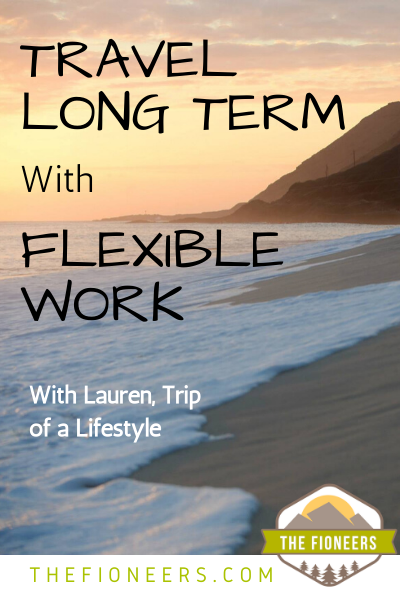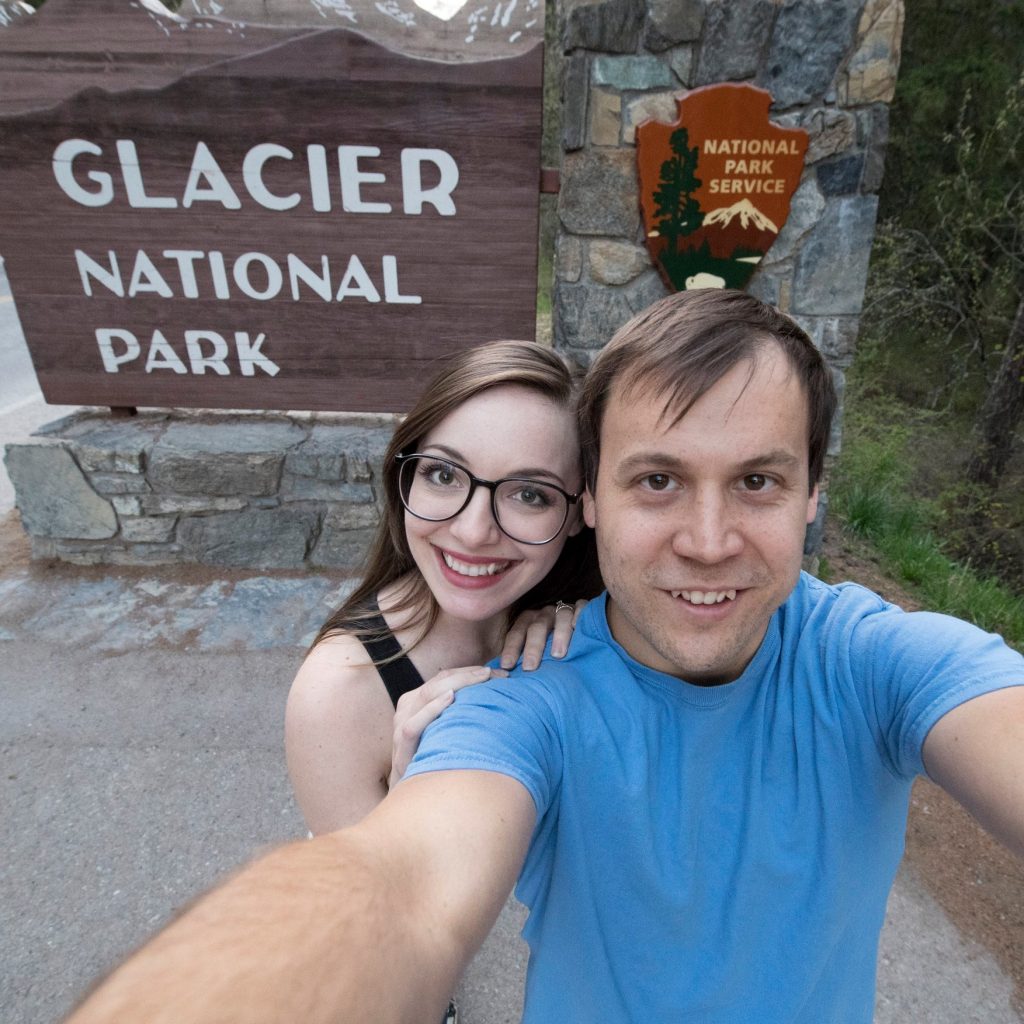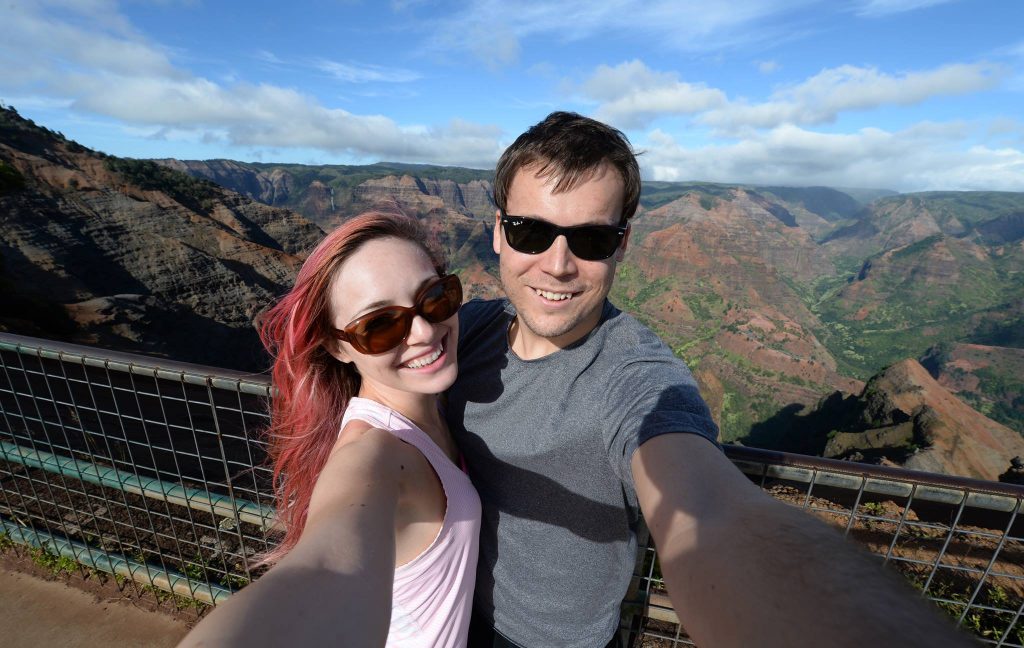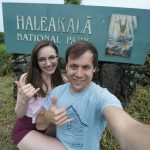
I first heard about Lauren and Steven’s story a few months ago. They started their blog, Trip of a Lifestyle, in the summer of 2019. I was instantly enamored with their story.
There are so many aspects of their lives that I find inspiring. For one, their love for travel is part of their “why” for pursuing financial independence. Since I also love to travel, I tend to gravitate toward others who do.
They have also been extremely intentional about designing their lives and using money as a tool to reach their goals. One thing that I love about their story is that they didn’t just push toward reaching financial independence by 30.
While this was their original goal, they realized that they could transform their lives with small changes along the journey. They took mini-retirements and had periods where they scaled back on work. They’ve now gotten to a point where they can scale back on work permanently.
At the Fioneers, we want to make a lot of small changes along our path to FI. Our goal is that when we hit our FI number, it just feels like another day. If we are already living the life we want, we won’t need to change anything.
Lauren and Steven are awesome examples of this philosophy.
Let’s get into their story!
1. Tell me a little bit about you.
I’m Lauren Keys. Last year I started a blog with my husband, Steven Keys, to share how personal finance and travel go hand-in-hand. Our blog, Trip Of A Lifestyle, focuses on how you can enjoy the journey to financial independence and what to do once you get there.
We’re pretty close to “officially” hitting our FI number. Yet, we feel like we already have most of the freedom we were seeking by pursuing FIRE in the first place. This is why I quit my job at the end of 2018, just a few months after my 29th birthday. I now work flexible freelance gigs. Steven reduced his workload (also at 29) and now works part-time. We weren’t necessarily aiming to slow down by 30; it just happened that way.


Last year, we traveled to every US National Park. During the trip, we inverted our typical weekly schedule. We had 5 days of fun and 2 days of freelance and blog work (we launched Trip Of A Lifestyle from the road). We found that it was a lot easier to want to work when it was balanced with exploration and fun the other days of the week.
So, that’s where we’re at now: slowing down to enjoy the work we’ve put in. We’re living life on our own terms by finding time for part-time work, hobbies, travel, and visiting family and friends.
2. What deliberate decisions have you made to slow down and improve your life?
Honestly, we’ve made several deliberate decisions over the years to pump the brakes or pivot to improve our lives. I think being open-minded to opportunities helped us roll with the punches.
For example, right after college, Steven decided to go to graduate school in California. We loved the weather, the beaches, and the vibe. Unfortunately, the Ph.D. program wasn’t a good fit (and it would take 5-6 years to complete it). I already knew he was over full-time physics coursework from undergrad. Once he realized it too, we were able to look at other options. We moved back to Florida for him to complete a different program, earn a master’s degree, and become a teacher.
Another decision to slow down came after we checked off several big goals from our list. In 2014, we got married and had saved over $100,000 in the two years following college graduation. We worked really hard to make that happen, and we were honestly feeling a little burned out. So we decided to make our honeymoon count: We moved to Hawaii for 6 months.


Our Hawaii honeymoon didn’t end up costing us any of our savings, but we weren’t getting ahead on our larger FI goals. After 6 months, we decided to move back to Florida and go back to work. We were energized by our experience in Hawaii. It gave us a taste of the freedom we were seeking by working toward FIRE.
When we returned, we found higher-paying jobs and put our noses to the ground for the next few years to save even harder. As you can probably imagine, we got burned out again.
That’s why I decided to quit my full-time job in December of 2018 as we prepared for a trip to visit all 61 national parks. Steven was able to come to an agreement with his employer to work part-time from the road during this trip. He actually still works part-time for that same company now. I haven’t gone back to traditional employment since quitting. Instead, I focused on putting together some part-time freelance marketing work with a few different clients.
3. How has pursuing long-term travel and flexible work arrangements impacted your quality of life?
Now that we’ve returned from the national parks trip, we now realize that we feel like work is optional. We keep our cost of living low, our investments return a good amount, and a small amount of freelance work allows us to cover our costs and save a little bit. Both times we took a big trip, it didn’t end up costing us any of our savings. We’ve started to think, “why do we need to keep saving so hard?”
We assumed we’d be going back to work full time — with renewed energy for our jobs — after our National Parks trip.
But the change of pace on the road just became a way of life. We have enough saved up now to feel comfortable dialing it down. Because we’ve kept our expenses low and our hourly wages continue to grow, a tiny bit of part-time work can cover our entire cost of living. Why not try this lifestyle out long-term?
We really enjoyed the five days of fun and two days of work schedule from our trip a lot more than the opposite.
4. How did these shifts impact your financial goals or timelines?
Although we’ve taken long breaks during this journey, we waited until being pretty close to FI to slow down permanently. We’re not far off from hitting our number, but it’s more important to us now to just enjoy our time.
“Officially” hitting FI before 30 wasn’t more important to us than the trips we took or the experiences we’re having now in this downshift.
5. What enabled you to pursue flexible work arrangements and long-term travel?
It was really important for us to be in a comfortable financial position. The buffer of savings we built provided me the courage to quit full-time work recently.
The first $100,000 we saved on pretty modest salaries, prior to taking our 6-month Hawaii trip, was a springboard of courage that really changed the way we thought about our freedom.
I think that’s important for people to realize — you don’t have to be FI to feel free. I appreciate that even having a few years’ worth of living expenses socked away can give you incredible flexibility.
After our honeymoon in Hawaii, we moved to Gainesville, Florida, to go back to work and start the cycle of extreme savings again. We didn’t want to get in over our heads with a home purchase that would be too big or too expensive for us, especially since we weren’t sure how long we’d even end up living in Gainesville. Our budget was “whatever we can actually afford today,” so we bought a 3 bedroom condo for $71,000, and we paid cash. That was definitely the largest check we’ve ever written.
Since owning the condo, we’ve done some house hacking. We’ve taken on roommates and rented it out while we were on the road visiting the national parks last year. That definitely helped us grow our savings.
Most importantly, we’ve lived very frugally since starting down the path to FIRE. We started tracking our net worth right after college in 2012, and our goal has been to grow that number as much as we can. This is why we keep most of our money invested at all times, so it’s always growing and working for us.
Being debt-free (including our condo) and having decent-sized savings has enabled us to slow down in the long term. However, you don’t have to check every box to downshift. Like I said before, money in the bank has always given us a sort of courage to take risks, especially those that involved quitting our jobs and traveling.
6. Did you need to adapt anything in your life so that flexible work and long-term travel would work for you?
One advantage of starting on the path to FI at a young age was that, rather than adapting to a lower cost of living than we were used to, we could just continue the frugal lifestyle we were already used to.
For example, we’ve been using the same Ikea desk that we bought for $60 for our home office since graduation. We’re also big fans of Taco Bell. Our order comes out to less than $6 for the two of us. Don’t believe us? There’s an actual picture of Steven on their Wikipedia page.
We never felt like we were missing anything by driving a used car versus a new one. Our home never felt inferior because our couch was $300 instead of $3,000.
We lived pretty frugally throughout college, and we were happy. Knowing this, it was easy to maintain our lifestyle as we moved and job-hopped, even when we started earning more money.
As our incomes increased, we kept our standard of living the same. Because we bought our condo outright, our housing costs decreased.
We are really passionate about preventing lifestyle inflation. One mission of our blog is to reach people at a young age (high school or college). You see a lot of literature about how to make mindset shifts in order to downsize and reach FI or how to get your spendy partner on board. If you start pursuing FI early, you get to skip all of that. We believe that knowing about FI earlier before you inflate your lifestyle makes it easier to reach your goals.
7. Why and when do you think someone might consider “downshifting?”
It’s important to start by analyzing your financial situation and to figure out where you want to go. We decided that we wanted to reach financial independence together as soon as possible. At the time, we didn’t have the words to describe the math Steven reasoned out as he learned more about investing. Then, I found Mr. Money Mustache. It was exciting for us to see the math for FIRE proven in his life. This was around 2012, before there was as much community around FI as there is today.
Despite our FIRE goals, we still felt pretty comfortable taking breaks along the way. We spent six months in Hawaii for our honeymoon when we were less than a quarter of the way to financial independence. Because of the money we had already saved, we felt comfortable making choices that would increase our happiness.
Life should be about maximizing happiness, and working toward FI helped us put that into perspective. Having your financial “ducks in a row” helps you to pivot to increase your happiness over time. It could allow you to adjust your spending habits, feel free to change jobs, or take a career break.
The reason we’ve made decisions to slow down is to better enjoy the journey.
8. How did your pursuit of FI help or hinder your decision to travel and pursue flexible work?
We definitely wouldn’t have been able to take the breaks without the buffer of savings we had from pursuing FI.
At this point, we’ve stopped keeping track of how close we are to our FI number. If we had continued at our previous savings rate while working full-time, we would have reached FI within a couple of years.
We’re technically still in the accumulation phase since we’re still saving money. However, we’re just taking it a lot less seriously now. It feels really nice to have a “we’ll get there when we get there” mentality while still living our usual frugal lifestyle.
9. What advice do you have for someone considering a similar decision?
Be prepared to follow through on your plans — whether that’s quitting your job or switching to part-time for a while. I think a lot of people have trouble finding the courage to actually “pull the plug” and do something like taking a sabbatical. We recommend setting a specific financial goal (like “save $100,000”) and knowing what you want to do once you hit that goal (like, “live in Hawaii for 6 months”). It’ll be easier to give yourself permission to take the leap that way.
When it comes to making money while traveling, negotiating remote work with your employer, or finding freelance work, I’d like to encourage people to believe that there’s a creative solution to almost every problem, even if it’s not immediately obvious. Even if you don’t have a job that can be done remotely, there are a lot of creative options for creating income streams while traveling and taking time off from full-time work. Don’t count the idea out just because of the specific job you have.
Thank you, Lauren, for sharing your inspiring story!
I love Lauren and Steven’s perspective that you can design your lifestyle before reaching financial independence. Many people think they need to reach full financial independence before being able to make significant changes in their lives. Lauren and Steven (and so many others) show this not to be true.
You don’t need to be FI to take a mini-retirement or a break from your full-time careers like Lauren and Steven did for their 6-month honeymoon trip to Hawaii. To do this, you really only need financial stability and a pot of F-You money. Lauren and Steven were able to scale back on work significantly to enjoy 6 months in Hawaii after saving $100,000.
Many people think that you can’t do long-term travel until you reach FI. Lauren and Steven show us that isn’t the case. After reaching Coast FI*, they were able to get creative.
*Coast FI is when you have enough money saved in your investments that if you don’t add to (or withdraw from) them, you can retire comfortably at (or before) a traditional retirement age. Those who have reached Coast FI only need to cover their actual costs of living.
I love how Lauren encourages us to come up with creative solutions. Even if long-term travel isn’t possible at your current job, you can look at other options. You can find a job you can do remotely either full-time or part-time like Steven did. Like Lauren, you could build up your own business or do freelance work.
It’s amazing how many opportunities open up when we believe that unconventional choices are possible.
Another thing that can help you design your lifestyle before financial independence is to keep your costs low. Lauren and Steven were able to do this by choosing to not inflate their lifestyle after graduating from college and then buying an inexpensive condo with cash.
Even though our expenses are not as low as Lauren and Steven’s, we’ve also experienced the freedom that lower spending can provide.
In the early days, keeping your expenses low allows you to bank more of your money to build financial security. Once you’ve reached Coast FI, it allows you to work significantly less and enjoy your life now.
It’s important to make sure that you don’t cut everything that brings you happiness out of your life. Some lifestyle inflation can bring you a lot of happiness as long as you spend your money on things that add value to your life.
For Lauren and Steven, this was spending money on travel. For us, it was getting a dog, moving to a HCOL area, having in-unit laundry, and, of course, traveling more often. For you, it might be something else.
Ultimately, the best choice I’ve made is to work less. While I make a lower income, I have more time available in my life. This allows me to spend time focusing on my health, relationships, and passion projects. While my current job doesn’t yet provide location independence for long-term travel, I’m working toward it!
It’s possible to design your life before you reach FI. My hope is to make so many small shifts that my life doesn’t need to change when I reach FI. Lauren and Steven show us this is possible.
If you’d like to follow Lauren and Steven, you can do so in the following ways:


- Blog: TripOfALifestyle.com
- Facebook: @tripofalifestyle
- Instagram: @tripofalifestyle
- Twitter: @TOALifestyle

























Owning a home + CoastFI is the best thing ever, FunFi. Like you mentioned, you essentially just need enough to cover foods, and others. This story inspired me to keep working towards that.
Hi Karl,
Thanks for the comment! Absolutely – if you are debt-free (including no mortgage), that’s really the best of both worlds!
Good luck! Keep going!
Jessica